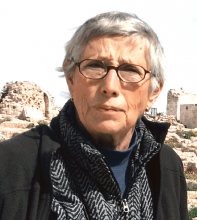You are here
A moral obligation
Nov 23,2016 - Last updated at Nov 23,2016
If Daesh were left free to roam the region, among its priority targets for destruction would be Jordan’s Petra, the magnificent rose stone Nabataean city, and the curve of columns at the amphitheatre in Greco-Roman Jerash, iconic relics of ancient civilisations that exist in the Kingdom.
Explosives would be used to tear Petra’s Treasury from the face of the cliff where it was carved by Nabataean stonemasons 2,300 years ago and to level the Corinthian columns that have stood sentinel in the Oval Forum at Jerash for nearly 2,000 years.
Petra and Jerash are symbols of Jordan and high-profile UNESCO world heritage sites that remind the world that the 21st century war-ravaged region has a glorious past as a fertile ground for the growth of civilisations and a hub of international trade.
While Daesh claims it is destroying idolatrous statuary and the remnants of idolatrous civilisations, it is really the past Daesh seeks to erase.
Daesh is determined to empty conquered people’s minds of knowledge of the rich civilisations that ruled this region in order to impose its narrow ideology.
In pursuit of this objective, Daesh has destroyed churches and mosques, tombs and monuments built during Muslim rule as well as ancient sites.
Daesh has taken its cue from the Afghan Taliban’s destruction of the Bamiyan Buddhas in March 2001.
When the Iraqi army liberated the ancient Assyrian site of Nimrud from Daesh, the troops found ruins.
Daesh had dynamited and bulldozed to rubble the 3,000-year-old palace of king Ashurnasirpal and blasted the monumental statues of winged bulls flanking the entrance.
The statues were of a mythical figure with the head of a bearded man, the body of a bull and the wings of an eagle and are regarded as the symbols of Nimrod and the Assyrian kingdoms.
Two hundred carved panels depicting scenes of life in Assyria were prised from the walls of the palace and sold or smashed.
The 2,900-year-old ziggurat, a terraced step pyramid that had towered over the site, was reduced to dust and rubble in September this year, in anticipation of the Iraqi government’s long awaited offensive to retake Mosul, conquered by Daesh in June 2014.
Daesh destroyed 95 per cent of the remains of Nimrud, the capital of the mighty Assyrian empire that once stretched from Turkey to Egypt.
But Nimrud lives through the massive winged bulls and artefacts that grace the halls of Iraq’s national museum in Baghdad as well as in displays in museums in Britain, France and the US.
Iraqi archaeologists, who have not yet visited the site, vow Nimrud’s remains will be resurrected.
Tragically, Daesh still holds other Iraqi landmarks, including the ruins of Assyrian Nineveh and Khorsabad, as well as the 2,000-year-old Graeco-Roman city of Hatra.
Assessment of the damage Daesh has inflicted on them awaits liberation.
Eighty per cent of Syria’s Graeco-Roman Palmyra survived the depredations of Daesh. The brutal cult brought down two 2,000-year-old temples, an iconic arch and tower tombs, vandalised statuary in the museum and beheaded the site’s guardian Khaled Al Asaad.
Daesh selected for destruction the temples of Bel and Baalshamin and the victory arch because they were the iconic structures at that site.
The cult’s fighters mined many other monuments with the intention of committing even greater devastation. Fortunately, the Syrian army expelled Daesh before it could carry out its plan.
Russian deminers spend several months clearing Palmyra of nearly 3,000 explosive devices and destroyed an arsenal of 12,000 mines and bombs stored there.
Nimrud and Palmyra are among the most important archaeological sites on earth. Those responsible should be held to account for the destruction, deemed by UNESCO to constitute war crimes.
In the first case of its kind, the International Criminal Court tried and sentenced Malian jihadist Ahmed Al Faqi Al Mahdi to nine years imprisonment for the 2012 destruction of 13th century tombs and the door of a mosque in Timbuktu during Mali’s civil strife.
Daesh ideologues and commanders should also be held to account for the massive crimes against this region’s cultural heritage.
Writing in The Guardian, Simon Jenkins squarely blames the rise of Daesh on the US and Britain, which under George W. Bush and Tony Blair invaded and occupied Iraq in 2003.
Jenkins argues that their actions destroyed “order and government in Baghdad” and sowed the chaos that has led to the emergence of Daesh, the devilish cult created by the West, a cult the West now, belatedly, wants to extirpate.
Jenkins contends the sites and buildings ravaged by Daesh should be rebuilt with funds provided by the US and Britain using modern technologies, including 3-D printers.
He writes: “The moral obligation on the United States and Britain to pay is massive. It is to reverse what [Daesh] hopes will be its lasting memorial, the visible eradication of a civilisation in the land of its birth.”
He warns, however, that UNESCO and archaeological purists are certain to object.
Perhaps, however, their rejectionism can be overcome if the sites can be restored using the masses of documentation on these monuments to ensure proper reproduction and employing original materials collected from their sites or gleaned from the surroundings.
Some Malian tombs have already been reconstructed and restoration efforts have begun at Palmyra.
Polish experts are already working on the iconic Lion of Allat flattened by Daesh. The Lion, dating to the first century AD, graced the entrance of Palmyra’s museum.
Fortunately, 80-90 per cent of its contents had been transported to Damascus and stored in secret bunkers a few days before Daesh, unexpectedly, invaded.













